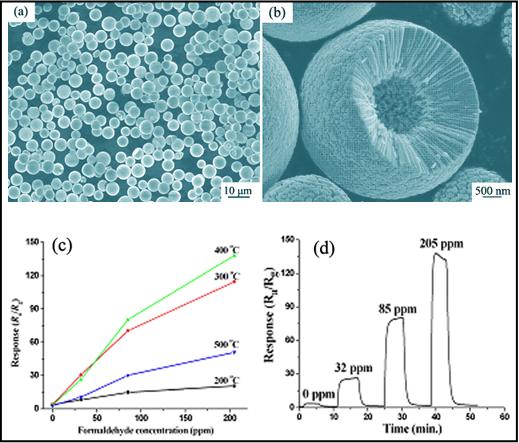Colloidal nanomaterials with controlled shell, core, or their combinations, so called core/shell or hollow structures, have attracted considerable attention due to their tunable and multifunctional properties, and potential applications in biotechnological, optical and sensing devices. Importantly, many of these applications are based on the complicated and hierarchical structures assembled by the nanoscale building-units to ensure their performance in nanodevices. Thus, the achievement on multidimensional interconnection of nanoscale building blocks into desired 3D structures is a significant challenge in the realization of advanced nanodevices.
Researchers at the Institute of Process Engineering of the Chinese Academy of Sciences developed a novel solution-controlled self-assembly process to aggregate the shape-defined building units into desired hollow structure in binary solvent. In their research, water was introduced to the polyol synthesis process and played a key role to control the assembly of the fresh formed nanocrystallites, and as-prepared hollow nanostructures were constructed by the radially oriented single-crystalline nanorods with their growth axis perpendicular to the center of the core, self-wrapping to form hollow spheres.
Researchers thoroughly investigated the influences of water on the structure of the final products, and the results revealed that water not only acted as a reactant,but also a binder to control the aggregation of the nanocrystals. A morphology evolution from nanorod bundles to hollow spheres, then two-hemispheroidal structures, finally the microrods were observed with increase of water amount, and this synthesis route provided a simple and facile way to realize the assembly of ZnO nanoscale building-units into complicated structures.
In addition, the investigation on the gas sensor based on as-synthesized products indicated that the nanorod-assembled hollow spheres exhibit high gas response and sensitivity to formaldehyde vapor attributed to their larger effective surface area of the aligned nanorods, revealing their advanced applications in nanosacle devices.
The above work has been published on the Crystal Growth & Design, 2011, 11, 1520, and related research work has received support from the National Nature Science Foundation of China.
Contact: YUAN Fangli
E-mail: flyuan@home.ipe.ac.cn
See more details: http://pubs.acs.org/doi/abs/10.1021/cg101429f

(a), (b) SEM images of ZnO nanorod assembled hollow spheres, (c) Gas response to formaldehyde and (d) Response and recovery curves to formaldehyde at working temperatures of 400℃
 Search
Search




 京公网安备110402500047号
京公网安备110402500047号